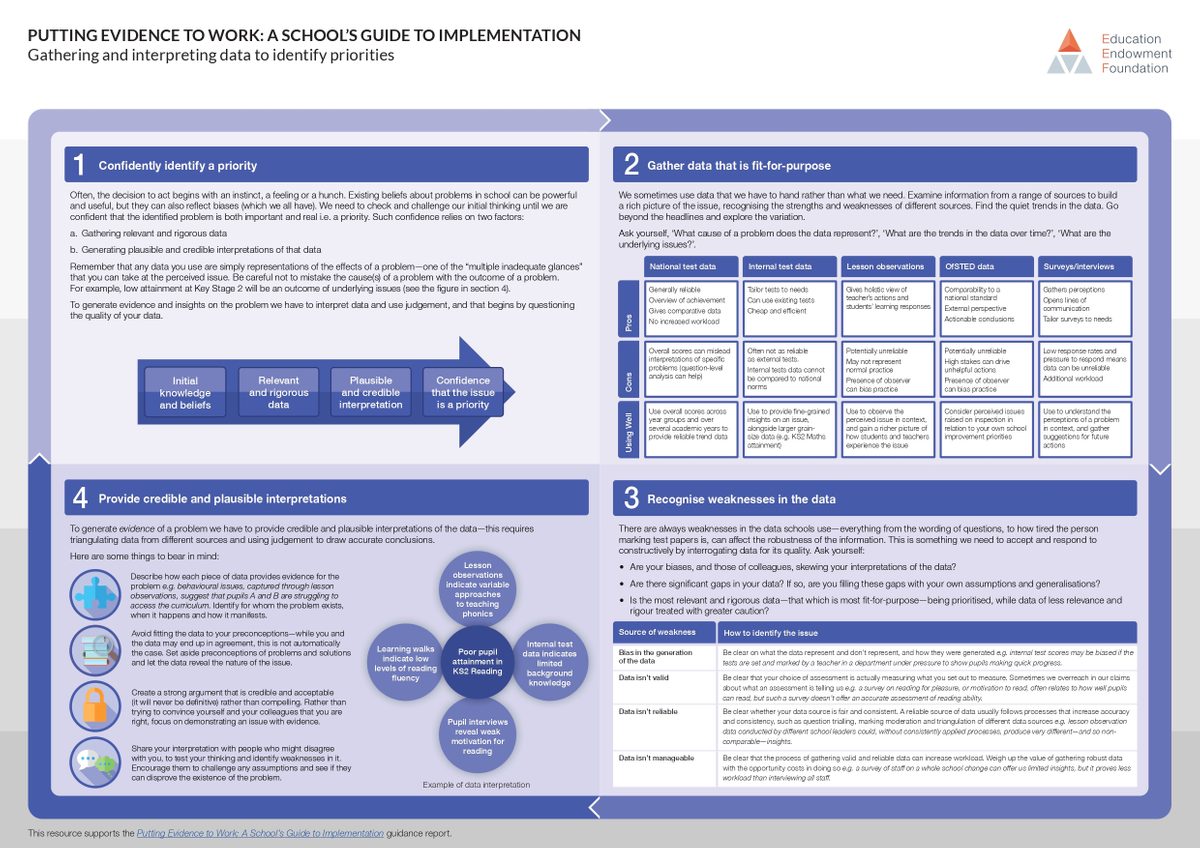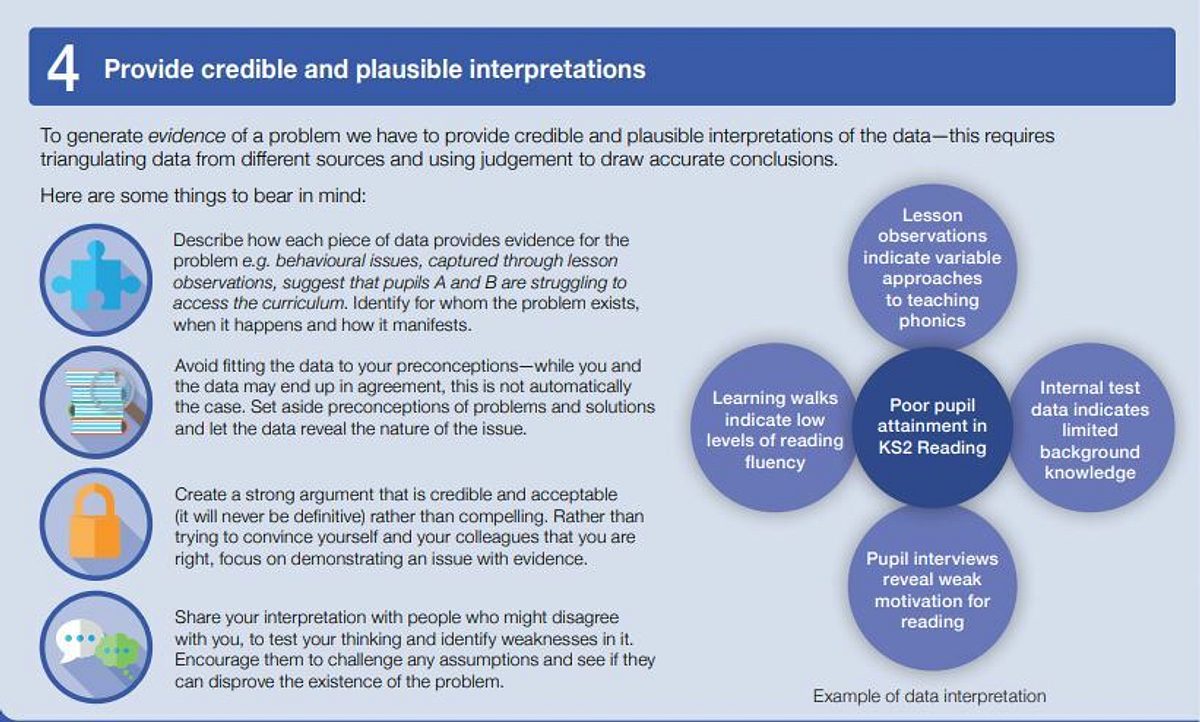
Blog -
Share on:

by Research Schools Network
on the
Hannah Crewdson, Evidence Lead in Education with Cornwall Research School describes how she uses data to guide priorities in her school.
“Poorly identified challenges leads to poorly identified activity and therefore weaker outcomes and initiative fatigue.”
Using data to identify school priorities requires careful thought and there are many pitfalls to avoid. Schools are data rich environments, but given our finite and often limited capacity as school leaders, it can be tempting to ‘cherry pick’ data that confirms our ‘hunches’ about how best to proceed.
So, how can we approach data to better understand the real challenges and opportunities in our settings? Particularly those that relate to our pupils from socio-economically deprived backgrounds.
The EEF provides us with helpful thinking tools, such as the ‘Gathering and Interpreting Data’ process from the ‘Putting Evidence to Work: A School’s Guide to Implementation’ guidance report.

Schools are busy places, and the simple act of pausing to reflect on the precision and accuracy of our interpretations can help us avoid misdiagnosis of need, and in turn support us to accurately identify challenges.
Working through this resource really helped me in my work as a primary SENCo and Evidence Lead in Education (ELE):
Interpreting data and identifying priorities – A case study
Stage 1: Confidently identify a priority
Our senior leadership team looked at headline attainment data. We predicted there might be attainment gaps between disadvantaged pupils and their peers; however, the disparity was not as significant as we had first thought. From this initial data exploration, we identified a more pressing challenge concerning the progress of the children at SEND Support. We spent time looking at the different cohorts, keeping in mind that this challenge could be symptomatic of other root causes.
Stage 2: Gather data that is fit for purpose
Having looked at external data which we used to identify our priority, we delved a bit deeper. We explored our internal data, tracking cohorts, looking at lessons and gap analysis.
Stage 3: Recognise weaknesses in the data
We looked at cohort size differences to avoid bias, and double checked the reliability of our gap analysis of internal testing. For example, if a test indicated a gap in children’s understanding of place value, was this reflected across multiple questions and what did this gap actually look like?
Stage 4: Provide credible and plausible interpretations
The EEF give us a visual way of representing this thought process, using the different data gathered to be specific about what the priorities will be. Having used this framework, we were confident that the key priority would be to support the progress of children at SEND Support.

We began to plan a series of interventions to address this and nearly launched headlong into planning and delivering these.
It was at this point I paused. First, I listened to a conversation between a group of teaching assistants who, with all the love in the world, were discussing the children and how they help them. They talked about what they did when children found things too hard, giving them something a bit easier or taking them in their group to do something less challenging.
Second, I reflected on my own priorities; I had already been asked to look at interventions, with a view to streamlining and monitoring and evaluating their impact. My plan for meeting the challenge seemed to fit nicely into this task. Was this a case of killing two birds with one stone?
After some further learning walks, pupil and staff conversations, our priority became access to a robust curriculum and high quality teaching, not about gap filling.
We are now planning for teacher professional development around understanding individual needs, as well as adapted high quality teaching to enable pupils to better access provision within the classroom, with their teacher. Early indications show where provision was generic, it is becoming more tightly focussed on individual needs.
Further reading:
The EEFs full guidance report into ‘Putting Evidence to Work: a School’s Guide to Implementation’ and associated tools can be found HERE.

Blog -

Blog -

Blog -
This website collects a number of cookies from its users for improving your overall experience of the site.Read more